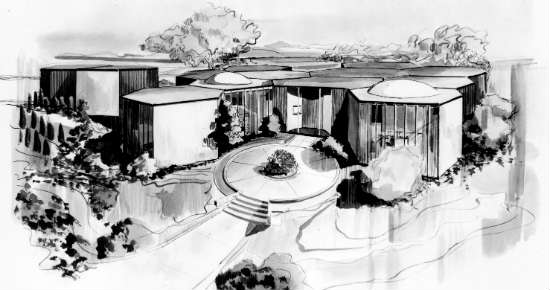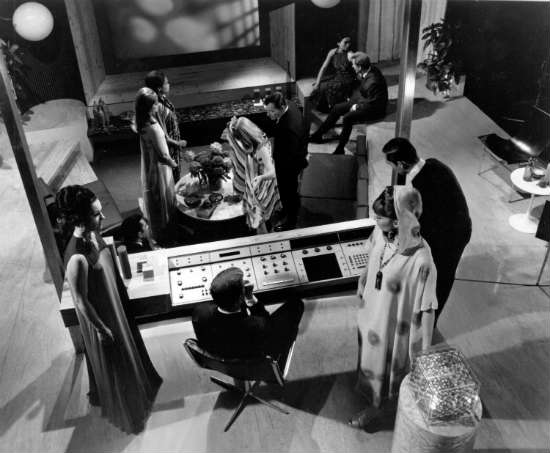News Center
News CenterHouse of Tomorrow Is a Reality Today Still Waiting on Flying Cars
By Leslie Armbruster
@Ford Online takes a look back at Ford heritage moments from the company's past.

DEARBORN, Mich., April 4, 2013 – Most are familiar with the predictions of the 1950s, including the one that said we would be commuting in flying cars by the late-1990s, but you may not be as familiar with the Philco-Ford ideas about how today’s homes would operate.
Developed in the mid-1960s, and featured in the 1967 motion picture, 1999 A.D., their revolutionary House of Tomorrow turns out to have not been very far off from reality.
Ford Motor Company purchased the Philco Corporation in 1961 in an effort “to broaden our range of activities – to move into additional non-automotive fields,” said then company CEO and Chairman Henry Ford II. At the time of the purchase, Philco was composed of a Government and Consumer division.
 The Government division focused on radar, communications, aerospace and defense work. The Consumer division produced television, radios, air conditioners, refrigerators and other small appliances for the home.
The Government division focused on radar, communications, aerospace and defense work. The Consumer division produced television, radios, air conditioners, refrigerators and other small appliances for the home.
It was the Consumer division that created the House of Tomorrow, which, according to a press release about the project, incorporated “some of the most practical fantasies ever conceived.”
This fantasy home would be controlled by a central computer that would automatically adjust all lighting, entertainment equipment, appliances and communications gear. This family computer also would monitor all systems in the house and alert necessary parties if it encountered anything out of the ordinary. The air within the home also would be regularly monitored for impurities, temperature and moisture content, with automatic adjustments as needed.
The kitchen would contain a variety of automatic appliances, including a food processor that would be both a freezer and a microwave oven. The residents of the house could select their daily meals from a menu and their individual portions would be mechanically positioned into the microwave for heating.
An individual menu would be prepared by the central computer to meet the nutritional needs of each member of the family.
Personal electronic consoles would allow family members to shop from the comfort of their home. A video shopper would scan the shelves and counters of the chosen store and orders would be placed by a push of a button.
 The store computer would communicate the bill to the home as well as bank computers and all financial balances would be automatically updated.
The store computer would communicate the bill to the home as well as bank computers and all financial balances would be automatically updated.
A huge 3-D television screen would be a dominant feature of the House of Tomorrow and would be utilized for both entertainment and education.
Students could receive lesson plans directly from their teachers and would use the central computer to obtain answers from places like the encyclopedia or the community library.
Electronic games also could be played on the television with the ability to play against a friend, or even against the central computer.
Of course, many of these fantasy conveniences envisioned by the designers at Philco-Ford are now everyday services that we all take for granted.
While we wait for our flying cars to be developed, we can dim our automatic lighting, microwave our individual portions and settle in to shop online for our favorite goods and play video games on our giant 3-D televisions.










Connect With Ford
Ford Motor Company on Facebook
Ford Motor Company on YouTube
Follow @Ford on Twitter
Ford Motor Company on Flickr